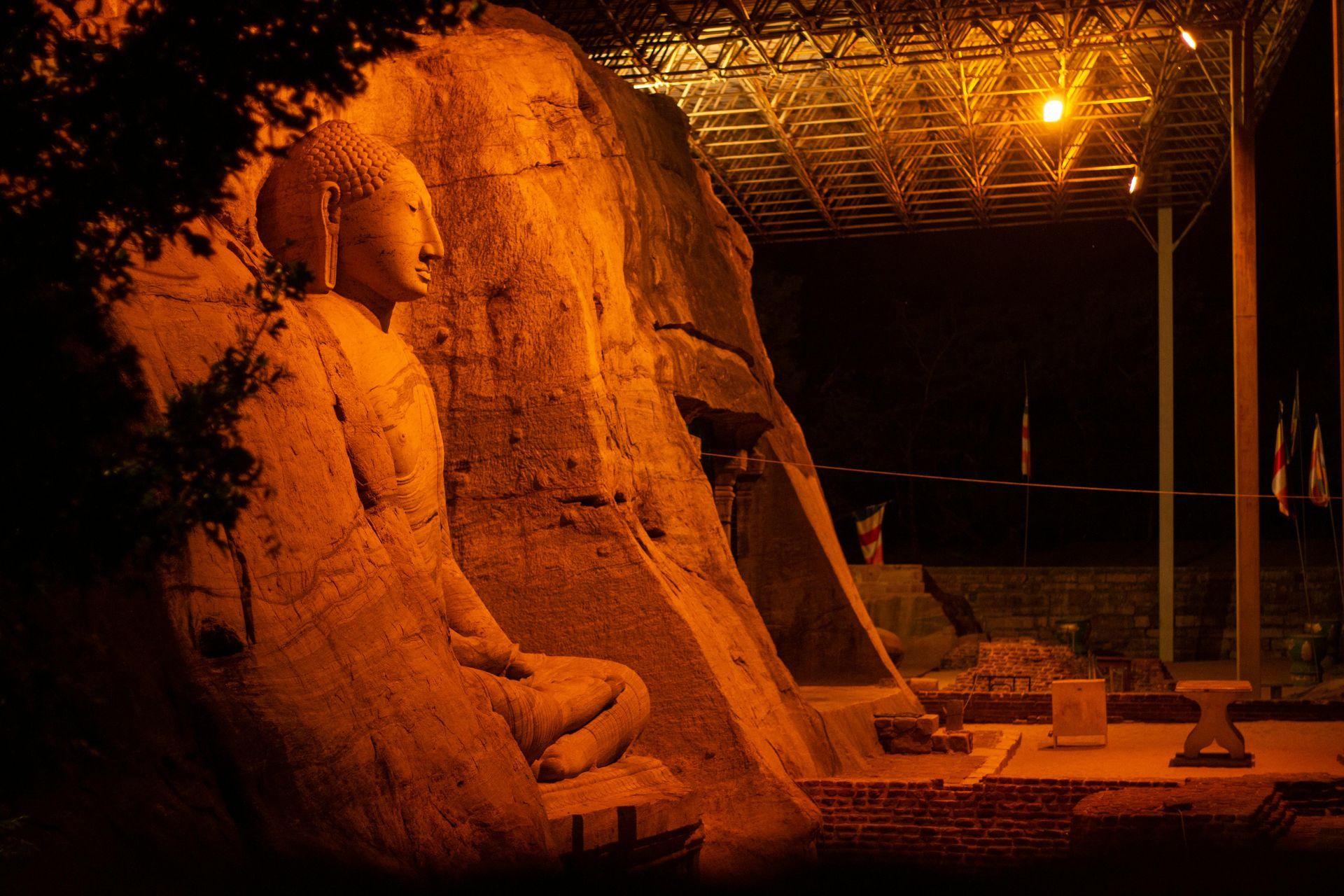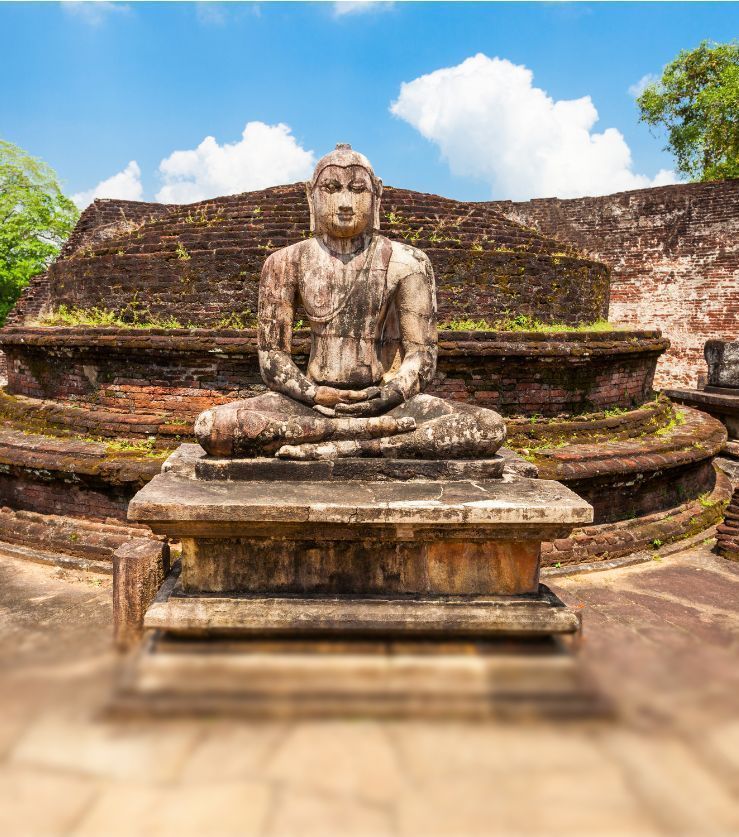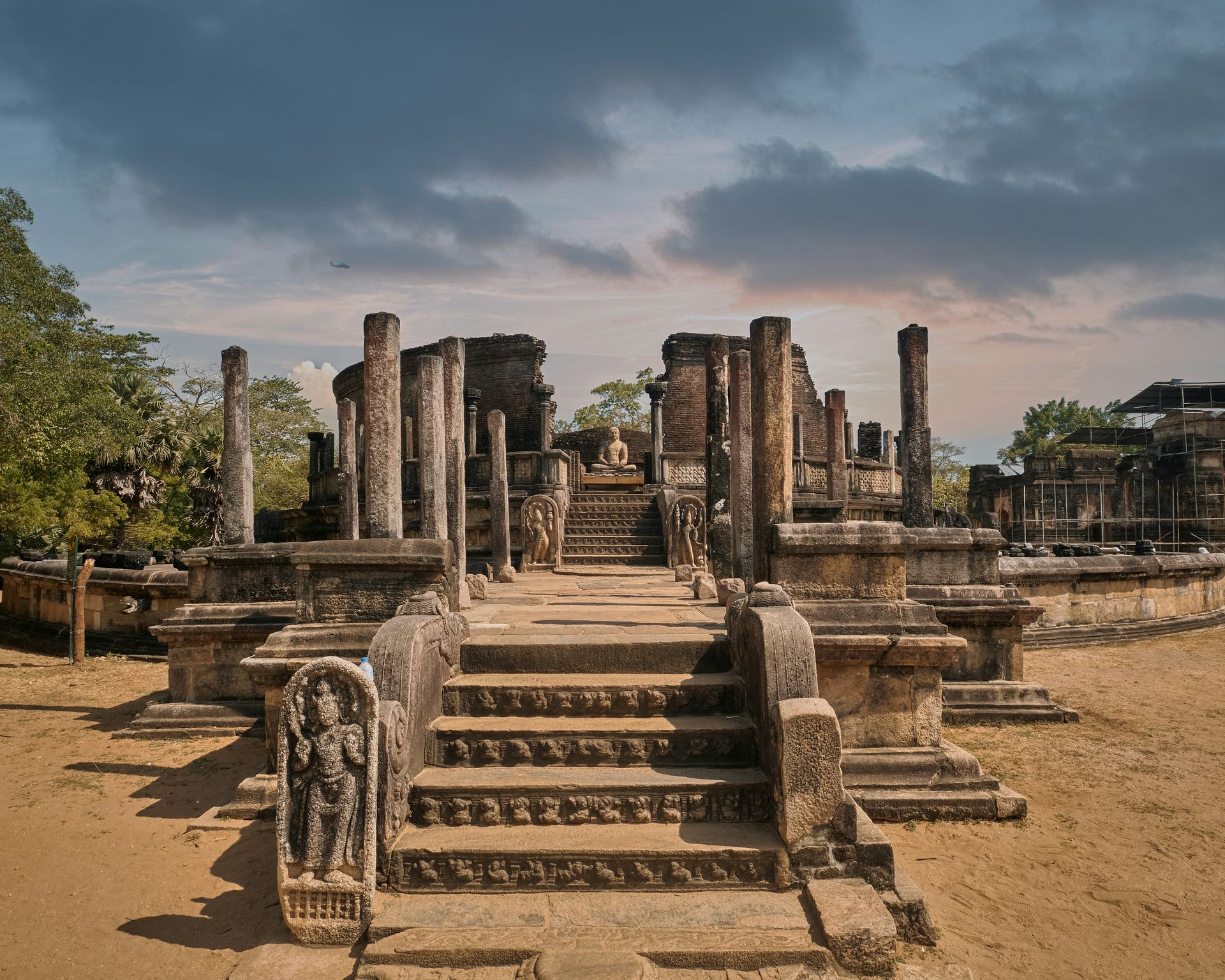Polonnaruwa
A royal city of ruins, carved in stone and steeped in time
In the heart of Sri Lanka’s Cultural Triangle lies Polonnaruwa — a majestic ancient capital where stone temples, royal gardens, and Buddha statues whisper stories from a golden age. Once the thriving seat of power in the 11th and 12th centuries, Polonnaruwa today is a vast archaeological park and a UNESCO World Heritage Site that invites you to walk through history at your own pace.
The city’s layout reflects a well-planned royal vision. Kings once rode through these streets, prayed in these shrines, and hosted ceremonies in grand halls. Now, as you explore on foot or by bicycle, you’ll pass through towering stupas, delicate moonstones, and carved guardstones that mark sacred thresholds.
At the heart of Polonnaruwa stands the Gal Vihara — a set of four colossal Buddha statues carved from a single granite wall, considered masterpieces of Sri Lankan sculpture. Each figure embodies grace and spiritual calm, from the meditative seated pose to the solemn serenity of the reclining Buddha.
Don’t miss the Royal Palace complex, with its towering brick walls and thick stone foundations that hint at the grandeur of a once-mighty court. Nearby, the circular Vatadage — a shrine built to protect a sacred relic — showcases beautifully preserved carvings and pillars still standing in perfect symmetry.
Unlike other ancient sites, Polonnaruwa feels peaceful and uncrowded. The ruins stretch across a green landscape dotted with frangipani trees, monkeys, and shimmering water tanks once used for irrigation. It’s a place where time slows, and the past gently reveals itself — stone by stone.
For travelers with an interest in history, architecture, or quiet wonder, Polonnaruwa is not just a destination — it’s a doorway into Sri Lanka’s enduring legacy.




